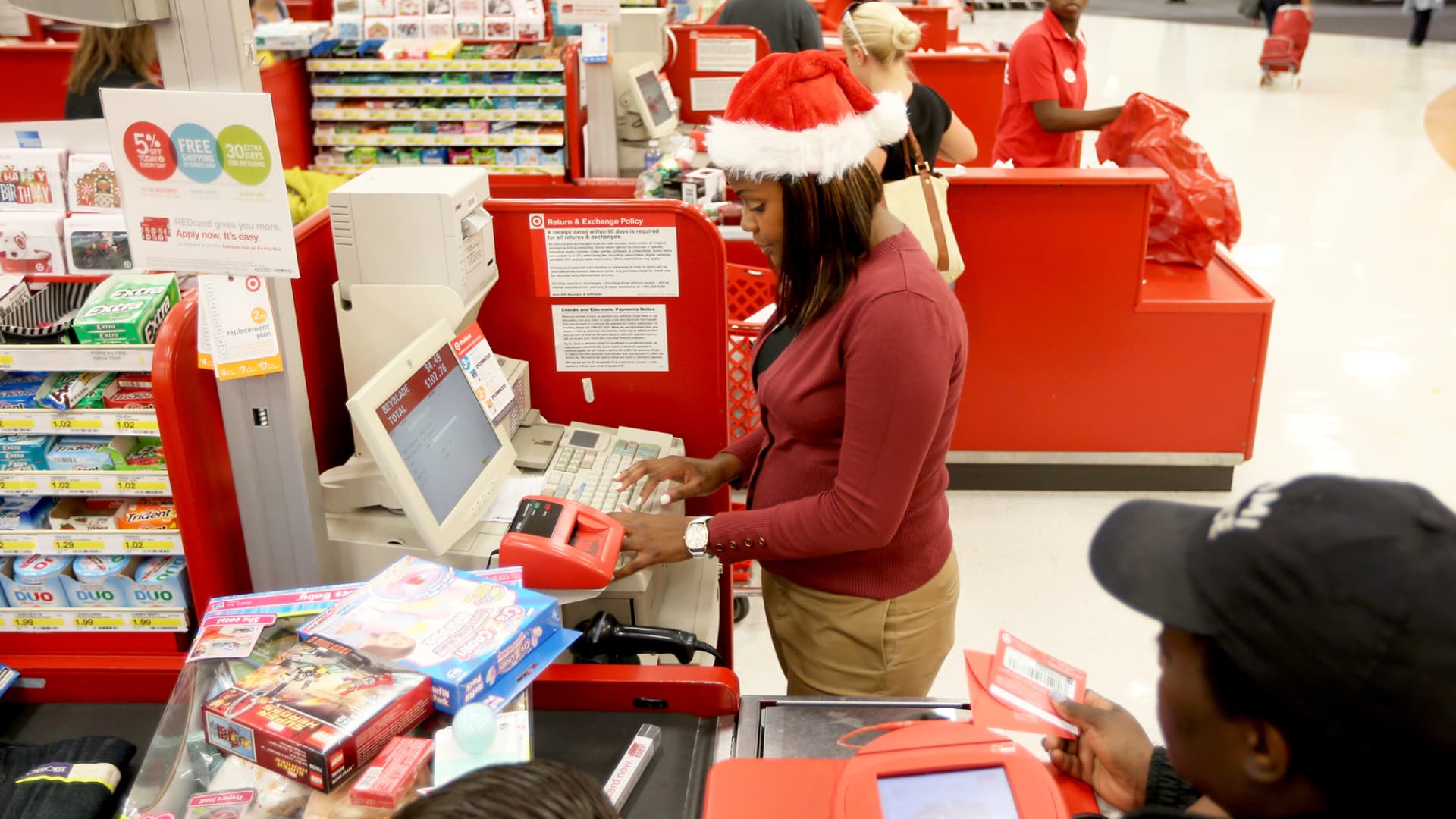Copyright CNBC

One of the biggest questions for retailers this holiday season will be how to compare results year over year due to the impact of tariffs. "This is truly unknown," Dana Telsey, CEO and chief research officer of the Telsey Group, told CNBC. "Companies, when speaking, are giving a wide range of price increases, and those price increases are not taken across the board, but only on a select number of items." According to Telsey, investors shouldn't be surprised if companies are asked to divulge what was the unit increase versus the sales increase because many retailers may be selling fewer items, but that will be masked by rising sales from the tariff-related price hikes. Take September's consumer price index, even with the tariffs, it showed inflation holding at 3%, slightly lower than the 3.1% Dow Jones consensus estimate. "CPI, I honestly think it's a little circular," said Oliver Chen, an analyst at TD Cowen. "The CPI has a lot to do with what the [Federal Reserve] may do with inflation, and then the retail stocks move off of that. But I think retailers and companies are looking at all of this, because if, for some reason, we have to pay much more for necessities, we will not have money for ... a TV and sweaters and stuff." This is why it will be critical for analysts to ask about the number of units sold versus more general questions, like pricing, on upcoming earnings calls, Chen said. "The reason why is the way companies are thinking about price increases," he said. "They think consumers will buy fewer units. The consumer is so pressured that when you raise prices, they're buying fewer, but everyone's paying the price increase and fewer units will neutralize the results. So if you raise prices by 3%, and then you sell 3% fewer units, you are at zero." Chen added, "This is why, in this environment, it is more challenging to say a company will have a price-raising benefit." Lauren Murphy, managing director at Wells Fargo Retail Finance, said while revenue remains a key financial indicator in the retail sector, in an inflationary environment, it can be misleading; higher sales don't always reflect stronger performance. "Pairing revenue metrics with gross profit margin offers a clearer picture," said Murphy. "Gross margin captures the impact of discounts, product costs, freight and customs charges, revealing what it truly costs to drive each sales dollar. Understanding this correlation is essential for fair and accurate year-over-year financial comparisons." "We expect upcoming quarterly and year-end earnings will determine which retailers can protect and maintain margin despite tariff pressures," said Murphy. Companies like Costco and Walmart have been smarter in looking at categories where they can strategically eat margins or have the ability to negotiate prices within their supply chains, Chen said. "For example, Walmart knows that you and I will look at egg prices like crazy," said Chen. "Companies chose different strategies, maybe to rush into buying things in advance, and they all have different levels of capabilities to negotiate with their suppliers." As a result, the upcoming quarter, which includes holiday spending, will be hard to assess, Chen said. "We're hitting this time right now, where consumers are trying to go shopping, and it's a little unclear because the consumers are going to experience the price increases more dramatically and differently," he said. "I think it's a little case-by-case basis and what categories are shopped." Telsey added, that retailers also have a better ability to glean what types of products are seeing pricing pressure. This isn't entirely uncharted territory, according Sean Henry, CEO of logistics company Stord. He told CNBC that the past five years have required unique adjustments to get an accurate picture. "Numerous supply, demand and resulting price shocks such as Covid, international wars, supply chain disruptions have been transient in nature, so it's been important to exclude their impact to be able to make accurate comparisons," said Henry. A report by Deloitte called out the Covid disruptions as well, saying: "Comparing 2020 earnings to 2019 was problematic due to the crash, while comparing 2021 earnings to the volatile 2020 created a 'rebound effect' that exaggerated growth." However, Henry cautioned that one of the differences with tariffs is that the impact will likely last longer. "We saw this when President Trump rolled out Section 301 tariffs on China in his first term — those tariffs have remained in place through President Biden's administration," said Henry. "As a result, any year-over- year spend will reflect the true total discretionary spending of consumers and any new price realities." Henry said to get a more nuanced look, one can also look at any divergence in retail spending growth relative to retail transaction growth to observe any near-term tariff-related impacts. "Assuming those continue to separate, it will show increased total spend by consumers, but in a more selective purchasing manner," said Henry.



